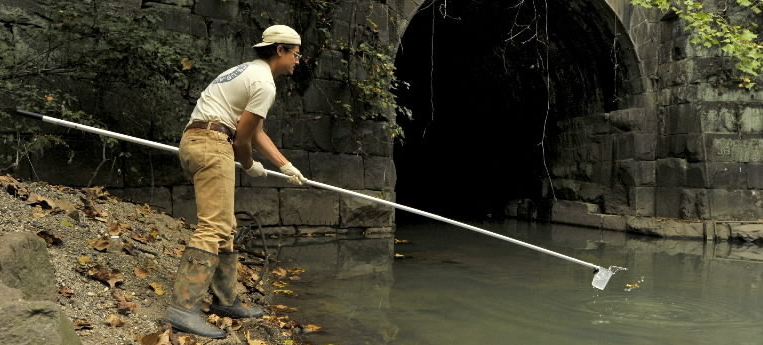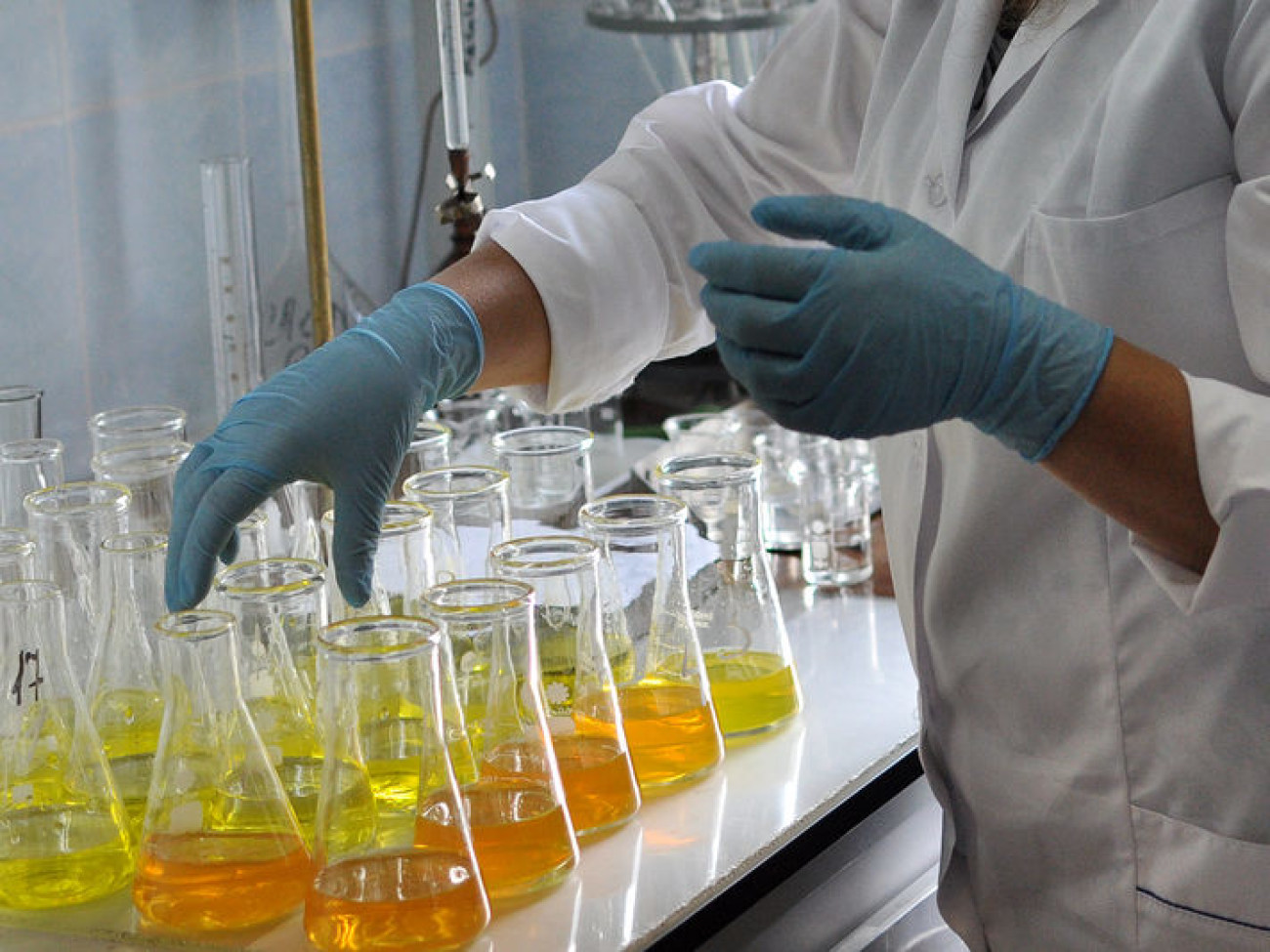Determination of volatile phenol in water
发布时间:2021/6/22 9:27:01 来源:贯奥仪器仪表 作者:便携式多参数水质分析仪器 阅读次数:
Volatile phenol in water refers to the protoplast poison with boiling point below 230, which can be divided into volatile and non volatile, which has great harm to crops, fish and human body. The pollution source is mainly from industrial wastewater of chemical industry. Volatile phenol is one of the important items in the daily monitoring of wastewater quality. Currently, the extraction spectrophotometry of 4-aminoantipyrine trichloromethane is the most common method for the detection of volatile phenol. As a water quality inspector, we must master the detection method and principle of volatile phenol in water.

The principle of the determination of volatile phenol in water
Phenol compounds and 4-aminoantipyrine can react with the oxidant potassium ferricyanide in alkaline medium to produce red antipyrine dyes. The color of the dye can be stabilized for about 30min in water solution; If chloroform is used, the color can be stabilized for 4 hours and the sensitivity of the determination can be improved.
The determination of phenol is interfered by the determination of reducing sulfide, aniline compounds, heavy metal ions, chroma and turbidity in water samples. The sulfide is separated from volatile phenol during distillation by acidification and adding copper sulfate, and other interfering substances can be removed during distillation.

Instruments and reagents for the detection of volatile phenol
All glass distiller, 500ml; Conical separating funnel, 500ml; With plug color tube, 10ml; Spectrophotometer.
Pure water used in this method shall not contain phenol and free chlorine
The preparation method of phenol free pure water is as follows: add sodium hydroxide to water to the pH of more than 12 and distill. In alkaline solution, phenol forming sodium phenolate is not evaporated
1.4-aminoantipyrine solution (20g/l)
Weigh 2.0g4-aminoantipyrine (4-APP, c11h13on) in pure water, dilute to 100ml, store in a brown bottle and prepare it in a temporary use.
2. potassium ferrocyanide solution (80g/l)
Weigh 8.0g of potassium ferrocyanide [K3Fe (CN) 6] into pure water, dilute to 100ml, store it in a brown bottle and prepare it in a temporary use.
3. trichloromethane (analytical pure)
4. buffer solution of ammonium chloride in ammonia water (ph9.8)
Weigh 29g of ammonium chloride (ch1c), dissolve it in 10ml of concentrated ammonia water.
5. starch solution (5g/l)
Weigh 0.5g of soluble starch, mix it into paste with a small amount of water, and dilute to 100ml with water just boiled. After cooling, add 0.1g of salicylic acid or 0.4g zinc oxide for preservation.
6. potassium bromate potassium bromide solution
Weigh 2.78g of dry potassium bromate (KBrO3), dissolve in pure water, add 10g of potassium bromide (KBr), and dilute to 1000ml.
7. sulfuric acid solution (1+9)
8. copper sulfate solution (100g/l)
Weigh 10g of copper sulfate (CuSO4 · H2O), dissolve it in pure water and dilute to 100ml.
9. standard titration solution of sodium thiosulfate
Weigh 25.0g of sodium thiosulfate (Na2S2O3 · H2O) into the pure water which is newly boiled and cooled, add 0.2g anhydrous sodium carbonate, dilute to 1000ml, and store it in a brown bottle. The accurate concentration is 0.0200mol of potassium dichromate solution (weigh 5.8838g of the standard potassium dichromate which is dried at 105 ℃ for 2h, dissolve in pure water, and then dilute to the scale in 1000ml volumetric flask), and calibrate according to the method described in the "dissolved oxygen" experiment.
Dilute the above calibrated sodium thiosulfate solution to [C (Na2S2O3) =0.05000mol/l]
10. phenol standard solution
Weigh 1.00G of refined phenol in pure water without phenol, dilute to 1000ml, and store it in refrigerator after calibration.
Calibration of phenol standard reserve solution: absorb 25.0ml of phenol reserve solution to be calibrated, put it into 250ml iodine measuring bottle, add 100L of pure water, then accurately add 25ml of potassium bromate potassium bromide solution, add 5ml of hydrochloric acid (p=1.19g/ml) immediately, close the bottle and shake it slowly. After 10 minutes of static setting, add 1g of potassium iodide, close the bottle and place it in the dark for 5min. Titrate with 0.05000mol/l sodium thiosulfate standard titration solution until it is light yellow, add 1ml starch solution (5g/l), and continue titration until blue disappears. At the same time, pure water is used as reagent blank titration. The mass concentration of the standard reserve solution of phenol is calculated according to the relevant formula.
11. phenol standard solution
Dilute the phenol standard reserve solution to (P (C6H5OH) =10.00ug/ml with pure water. Then dilute the solution to P (C6H5OH) =1.00ug/ml] phenol standard solution.
Operation steps of volatile phenol detection
1. water sample treatment
Take 250ml of water sample and put it in 50ml full glass distiller. Add 2 drops of methyl orange indicator, adjust pH to below 4.0 with sulfuric acid solution (1+9), change the water sample from orange to orange, add 5ml copper sulfate solution (100g/l) and several glass balls, then connect the condensation device and heat distillation. When the total volume is about 90% of the total volume, stop distillation. Slightly cold, add 25ml of pure water into the distillation bottle until 250ml of distillate is collected.
2. colorimetric determination
The distilled liquid of water sample is transferred into 500ml separating funnel, and the standard solution P (C6H5OH) =1.00ug/ml]0.00ml, 0.50ml, 1.00mL, 2.00ml, 4.00ml, 6.00ml, 8.00ml and 10.00ml are added to the 500ml separating funnel with 100ml pure water in advance, and then the purified water is added to 250ml.
Add 2ml of ammonium chloride buffer solution (ph9.8) to each separating funnel and mix well. Add 1.5ml4-aminoantipyrine solution (20g/l) to each solution, mix well, and add 1.5ml potassium ferrocyanide solution (80g/l), mix well and stand for 10min accurately. Add 10.0ml of chloroform, shake for 2min, and then lay it in layers. Insert the trichloromethane extraction solution into the drying colorimetric tube slowly by inserting the filter paper into the neck of the separation funnel. Use the spectrophotometer to measure the absorbance with the wavelength of 460nm and 20mm cuvette. Draw the standard curve and find out the quality of volatile phenol from the standard curve. Finally, the final results are obtained according to the mass concentration of volatile phenol in water according to P (C6H5OH) =m/v.
Precautions for water sample detection
1. if the phenol of the standard solution has color, it needs to be refined first. Take phenol in a distillation bottle with air condensation tube, heat and distill, and collect the distillate part at 182-184 ℃. After the refined phenol is cooled, it should be white and the plug is stored in the cold place.
2. if there is free residual chlorine in the water sample, excess ferrous sulfate can be added to reduce the residual chlorine to chloride ion, and then distilled.
3) if the phenol content in water is greater than 0.05mg/l, the 4-aminoantipyrine direct spectrophotometry can be used.

